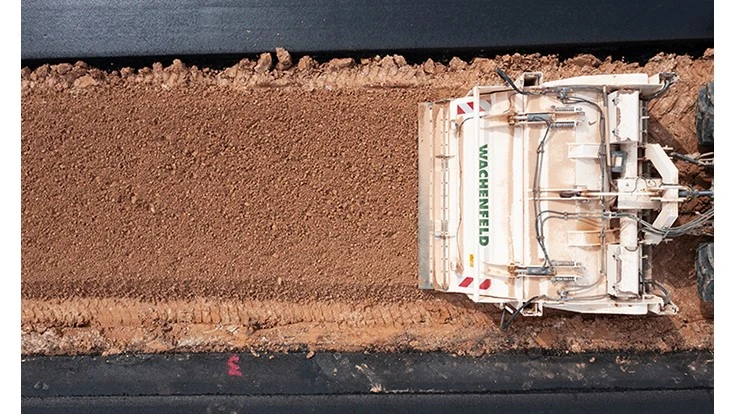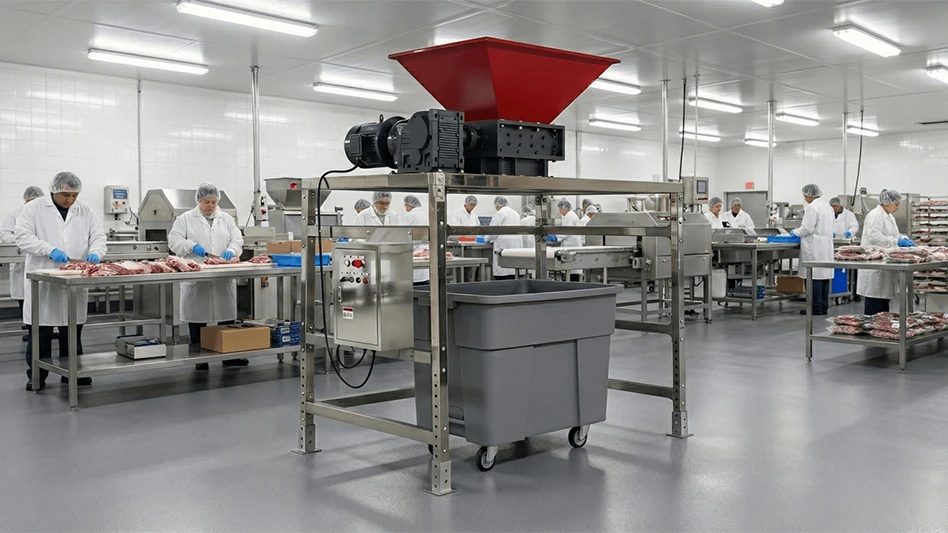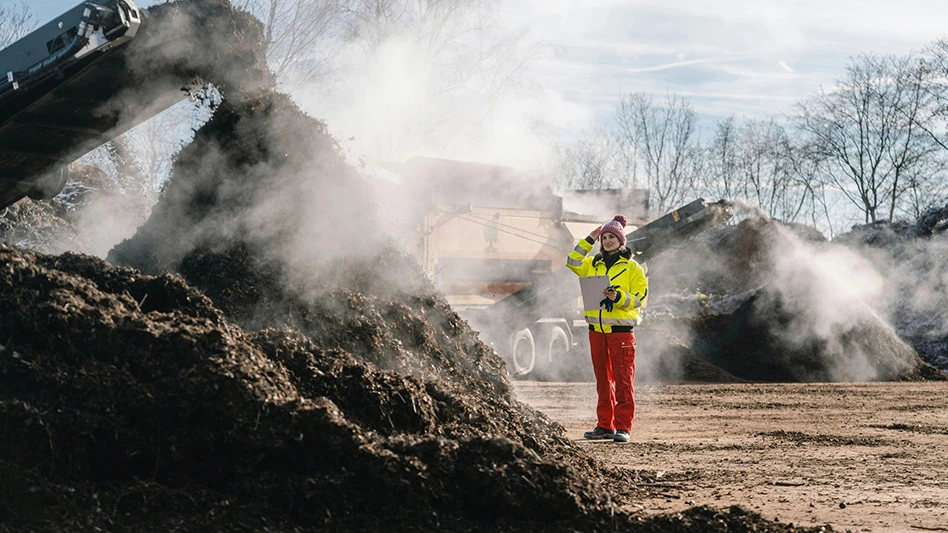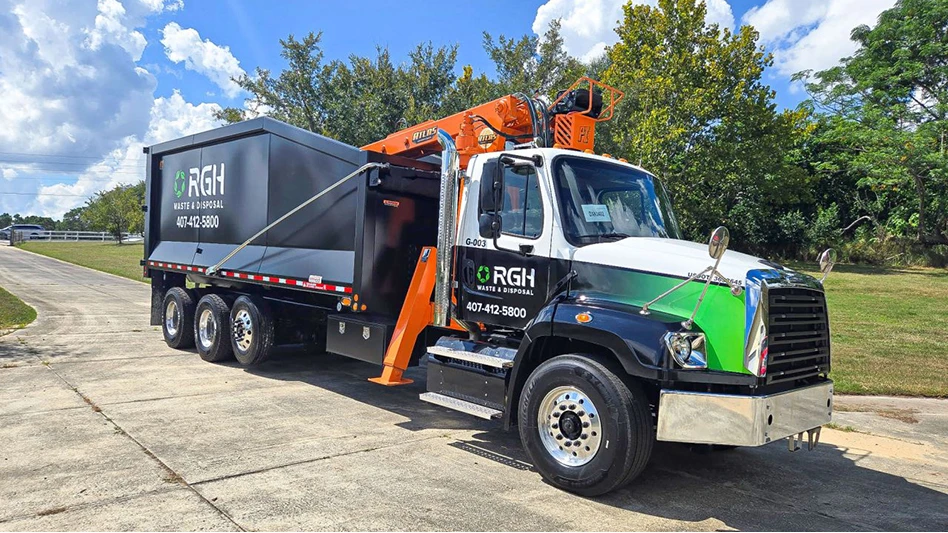
Photo courtesy of the Wirtgen Group.
Several different types of machinery made by the Windhagen, Germany-based Wirtgen Group are helping to prepare a landfill in Germany that will hold contaminated soils and construction and demolition waste.
Wirtgen says its machinery has processed nearly 53,000 tons of a clay-sand mixture soil as part of the process to build a new 25,000-square meter (270,000-square-foot) extension to an existing landfill.
At the site in the German state of Hesse, a “train” of Wirtgen Group machines, comprising tractor-towed stabilizers, soil compactors, asphalt pavers and John Deere motor graders, are taking part in the project.
The site was split up into 13 separate strips for the construction of the 360 yards by 87 yards landfill liner. A layer of crushed limestone hardcore followed by four layers of clay had to be placed on each of the strips and successively checked for impermeability. Following this, the liner was finished by paving two layers of a specially formulated landfill asphalt mix, according to Wirtgen.
“The core element of the landfill liner is the four layers of clay,” says the company. The material, a mixture of clay and sand, was trucked to the landfill project from an extraction site about 30 miles away. Adds the company, “As the scheduled placement of 1,200 tons of clay-sand mixture per day could only take place in dry weather, the reliability, readiness, quality and performance of the equipment deployed all played a decisive role.”
Comments Michael Huthwelker from Wachenfeld, lead contractor on the project, “We’ve had nothing but positive experience with Wirtgen Group machines for many years. On challenging jobs like this, it’s also a great advantage that we get the machines and the service from the same people,”
After the material was unloaded on the site, it was spread by a dozer and a John Deere 622GP motor grader, which were then followed by a Wirtgen WS 250 tractor-towed stabilizer. Because of the aeration of the clay by the milling and mixing rotor of the WS 250, the ground needed no further improvement by pre-spreading with lime or cement, says Wirtgen Group.
After that step, a Hamm 3414 HT P (padfoot) soil compactor compacted the freshly homogenized clay layer. It enlarged the surface area with its padfoot drum to accelerate the evaporation of the moisture contained in the clay.
The John Deere motor grader then took over and leveled the strip. After an appropriate pause for drying, a Hamm H 13i compactor with a smooth drum compacted the layers. The machine train repeated that sequence of earthworks for each of the four clay layers. In all, the train processed 52,800 tons of the clay-sand mixture.
Another aspect of landfill building projects is the construction of leachate drainage systems to minimize threats to the environment. At the landfill site in Hesse, the leachate drainage system consists of a massive asphalt block. A Vögele SUPER 1800-2 paver with a fixed width Vögele screed placed an asphalt package in six layers with an overall thickness of 14 inches at the center of the extension area. The run-off channel for the leachate was then milled into the asphalt block.
A Vögele SUPER 1800-3i paver with an AB 500 extending screed was also in use on the site for the subsequent paving of several layers of a formulated landfill asphalt mix placed over the clay package.
Thanks to the impermeable liner, says Wirtgen, the landfill is now “ideally equipped for an environmentally friendly future with no leakage of harmful leachate.”
Latest from Waste Today
- New York finalizes greenhouse gas emissions reporting regulations
- EPA selects 2 governments in Pennsylvania to receive recycling, waste grants
- NWRA Florida Chapter announces 2025 Legislative Champion Awards
- Yolo County reports fatality at Central Landfill
- New Way expands Canadian presence with Joe Johnson Equipment partnership
- Buffalo Biodiesel shares updates on facility modernization, NYSDEC compliance
- CETY launches HTAP platform for anaerobic digestion facilities
- Terex Ecotec announces Blue Machinery as distributor





